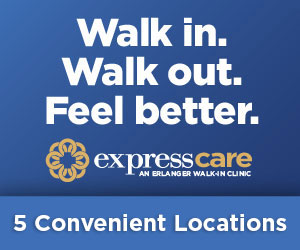Chocolate. Tomato sauce. Orange juice. Soda. What do these foods have in common? If you said they are all delicious, you are not wrong, but the correct answer is: they are all things that exacerbate acid reflux.
Acid reflux, often referred to as gastroesophageal reflux disease (GERD) in more progressed stages of the disease, is a problem experienced by more than 7 million Americans. Acid reflux is a backward flow of stomach acid into the esophagus, which might feel like a sour liquid in the back of the mouth, or a painful burning sensation in your chest (heartburn).
What causes acid reflux?
When you eat, food goes straight down a tube (your esophagus) and lands in your stomach. Your stomach releases acids and enzymes to help break down food and start the digestive process.
Your stomach acid is a similar pH to battery acid and is strong enough to dissolve metal, so luckily our stomach has a special coating that can neutralize the stomach acid and keep it contained.
There is a valve connecting your esophagus and stomach. This valve is like a burly doorman who is only supposed to let food pass from the esophagus into the stomach, but not the other way around. Sometimes though, this muscly doorman can relax and accidentally lets stomach acid escape up into the esophagus. When that happens, the strong stomach juices burn the inside of your esophagus, throat and chest.
Sometimes the culprit is lifestyle, like eating certain acidic foods, and other times it can be from a hiatal hernia. Regardless, when acid reflux strikes, it is a very unpleasant sensation that can actually lead to more health issues down the road.
Bridging the treatment gap
Current treatments usually involve a combination of lifestyle changes and medication. While this is effective for some people, about 30-40% of continue to be symptomatic. Of these people, only about 1% of them are candidates for surgery.
This leaves a huge group of people unable to get relief from their acid reflux.
Fortunately, Dr. Arslan Kahloon has joined the Erlanger team, and has brought with him an extraordinary new treatment for acid reflux called the transoral incisionless fundoplication (TIF) procedure. This is a minimally-invasive endoscopically-performed incisionless procedure (say that five times fast!) that is performed from inside the patient’s stomach without incisions.
Unlike a full-blown surgery for acid reflux that would take hours and require a patient to remain in the hospital for multiple days afterwards on a clear liquid diet, the TIF procedure only takes about 45 minutes. Afterwards patients only stay in the hospital for one night for observation and are able to progress to eating real foods much quicker.
Dr. Kahloon feels that the TIF procedure is “really changing the paradigm of how we care for patients with acid reflux disease” and can be a “life-changing process for a lot of our patients” who have fallen into the gap of previously unsuccessful treatment options for their acid reflux.
Life after TIF
After having the TIF procedure done, the valve doorman we talked about earlier is much better at its job of keeping stomach acid where it belongs: in the stomach.
People who had previously suffered at the hands of spicy and acidic foods are now in control of their lives and can return to enjoying their morning coffee. Instead of dreading nightly heartburn, people are able to sleep peacefully throughout the night.
Another huge advantage of getting the TIF procedure is it allows patients to get off their over-the-counter medications. Recent studies have shown long-term side effects between PPIs (Proton Pump Inhibitors) and increased risk of infection, vitamin deficiencies, and even dementia.
You don’t have to live with your Acid Reflux anymore. Learn more and book an appointment with Academic Gastroenterologists at Erlanger.







